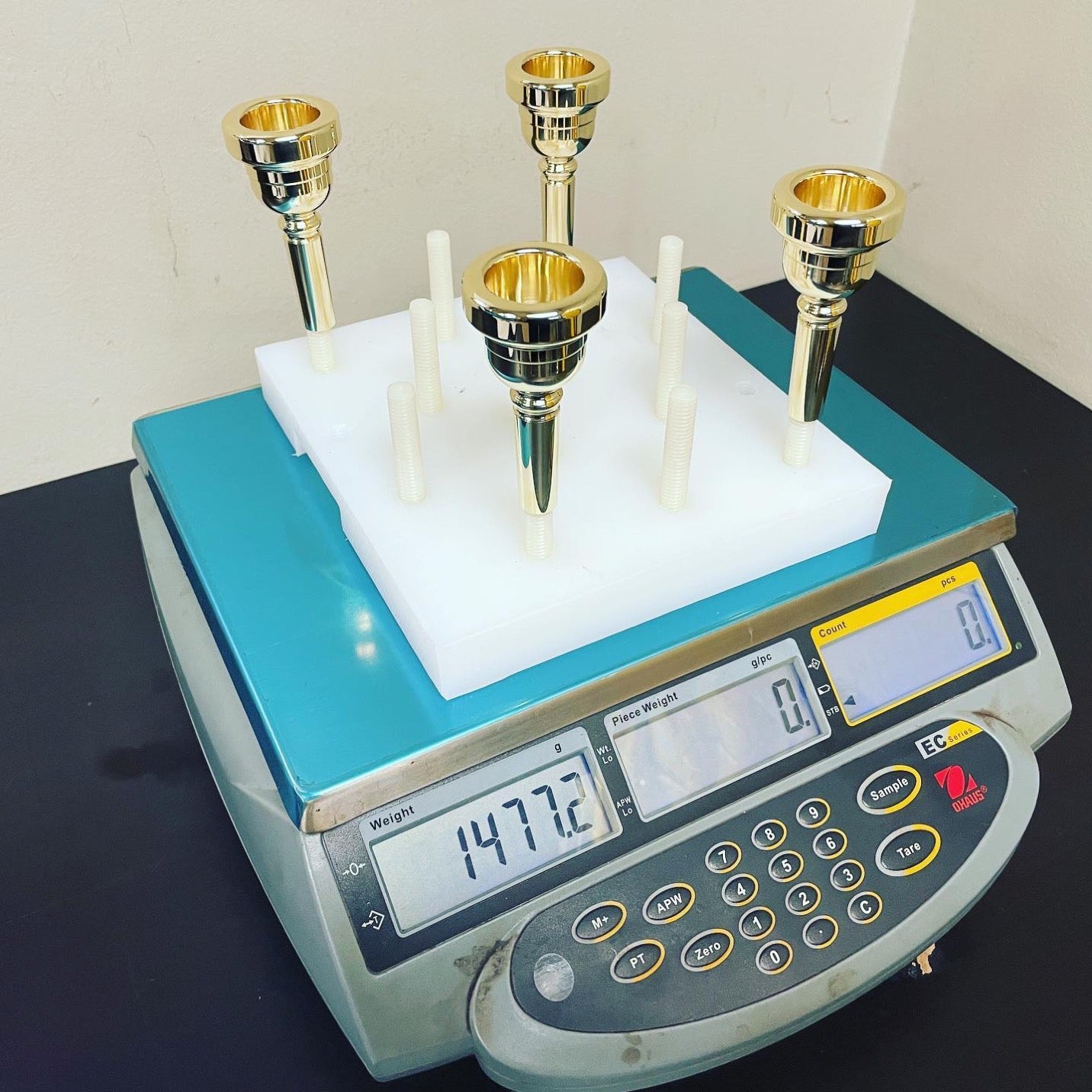This original article was written by Scott Laskey on January 18, 2016. It remains unedited.
So You Want a New Mouthpiece?
A new mouthpiece is the equivalent of about 300 hours of practice, is it not?
Being realistic about this, the two things you cannot “purchase” are range and endurance. For example, range is determined by how fast you vibrate your lips at a given frequency. No mouthpiece will let you vibrate the lips faster than you are capable. Your air speed is not increased beyond your ability. If you do not do studies to increase your range, do not expect a mouthpiece to do it for you.
Endurance is a process that is built up over time. I often get calls from students looking to lengthen the ability to play, especially in the upper register.
I will ask them what do they practice. “I play everything out of the Arban’s book”
“How often do you practice?”
“Three hours every day”, starts the reply. Followed by, “but, of course I don’t do it all at once. I was told I should rest as long as I play, so I practice for 15 minutes; then rest for 15 minutes, then I play 15 minutes and then rest 15 minutes until I get my three hours in.”
Doesn’t this make them able to play for only 15 minutes before they begin to feel endurance issues? Endurance and range are made and not bought.
My teacher always taught me that it was much more effective to correct the player than try to fix an issue with the player’s equipment. The player is far more important than the mouthpiece. But, with that said, there are times when a new mouthpiece can help open a pathway to improvement. I feel that a mouthpiece cannot be designed to help you do something you are not physically capable of doing. You must practice to improve your skills. The mouthpiece either makes it easier to accomplish those skills or will make it more difficult.
So, if you feel that it is time for a change, what is the best approach to trying out a new mouthpiece?
Here are a few pointers to keep in mind:
1.) Go into the process prepared and with a plan. Know which aspects of your playing you may wish to change. Cleaner attack, greater degree of flexibility, a change in tone, a better match to the instrument are viable examples.
2.) If you have not practiced in two weeks, you are not ready to make a decision.
3.) If you are fortunate to bring people with you, who actually know how your instrument is supposed to sound, trust their ears and their judgement. Many times the people working in the music store will be excellent judges as many of them are musicians.
4.) Play and listen. Record yourself when possible if you do not have someone with you that you trust. While tone will be questionable on the playback, you can listen back for the quality of the articulation and intonation.
5.) Bring in music that you know. Do not bring in things you are “working on” because you will not know if what you are doing is a result of the mouthpiece getting in your way or you just not yet having the skill-set to play the piece.
6.) Trust your ears more than your “feel”. Something that “feels good” is usually something with which we are familiar. Vincent Bach wrote some years back that the rim that feels the best to you will often times not be the rim that allows you to play your best. Remember it is all about how well you play, not how you feel when you are playing. And if your colleagues or band director tells you how much better you are sounding, it is amazing how good that mouthpiece will feel to you in a short time.
7.) Going into the process with a preconceived idea as to what you can or cannot play will only limit your options.
8.) Worry more about the middle range of the horn than the extreme upper register. Doc Severensen once told me that 95% of all the money made on trumpet is between low C and high C. This is where your focus should be.
In a later article I will address the issue of mouthpiece size, cup depths and shapes, along with throat sizes. But for the purpose of this article, focusing more on student needs, I suggest moderate cup depths.
I guess now would be a good time to bring up the “three-week rule”.
When I was primarily doing only custom mouthpiece work, I noticed that musicians who stayed with the mouthpiece for three weeks, usually ended up playing on it for a significant period of time. Those who questioned the change would then go back and forth to their old mouthpiece and eventually remain on their old piece.
Those who know me, know I used to be an avid golfer, and it was through this I read an article about changing the golf swing. The article basically said, if you want to make a change in your swing, it requires 60 conscientious repetitions a day for 21 days in a row to begin to eliminate old muscle memory and begin to establish new muscle memory.
As we are dealing with muscles when we play our instrument, the same rules apply here as well. Once you make a mouthpiece change, stay with it. Play it every day without going back to the old piece to make a comparison. There may be days when you LOVE the change. And, there will be days when you question the change.
But, as a rule, how it played when you first tried it out will essentially be how it is going to play after this 21-day period.
Once you make the change in mouthpiece, stick with it.
Copyright 2021. If referencing any of the written words above, we respectfully ask that you credit Scott Laskey as the author. Thank you in advance.



